Pearson On and On review - a very British gravel bike
An aero carbon gravel machine from the world's oldest bike shop

The sleek lines of the On and On should appeal to those who appreciate that aesthetic on a road bike. In fact this is very much a road bike made for off-road rides. The tyres offered loads of grip, but the On and On sits nearer the road end of the gravel spectrum. It’ll roll along nicely on the tarmac with slicker tyres, meaning it could double up as a winter bike. The finishing kit and componentry is unspectacular but dependable and there are build options for higher spec kit
-
+
Lots of mounting points
-
+
Great off-road capability
-
+
Bike fitting back-up on hand
-
+
Good build options
-
-
Basic rims for this price point
You can trust Cycling Weekly.
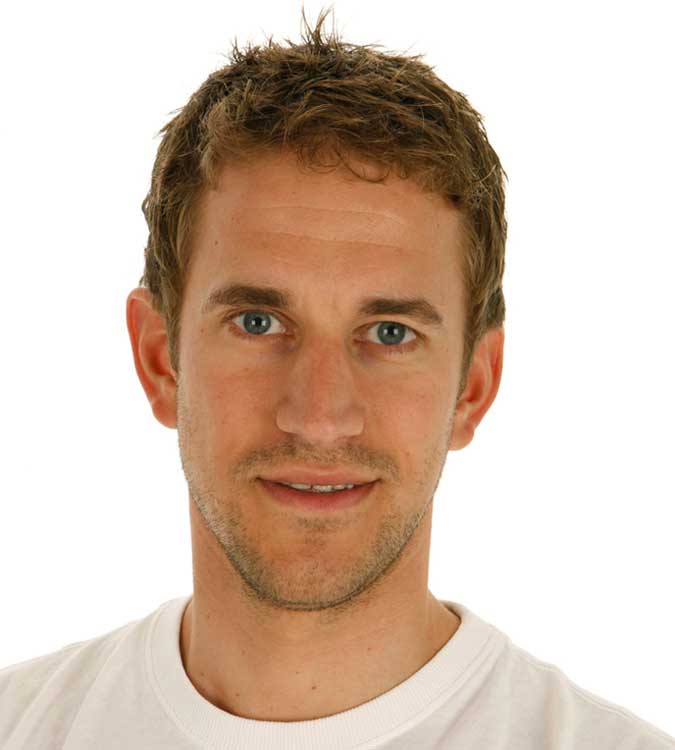
London’s SW14 postcode may not be the centre of the gravel-riding universe, but Pearson has been around since 1860 and so know a thing or two about bikes. Its in-house knowledge, gleaned largely from decades of customer bike fitting, has seen it move away from selling big-brand bikes to selling its own.
For gravel bikes (adventure bikes is its preferred nomenclature) that’s a five-bike range utilising four materials: carbon, titanium, aluminium and steel. The On and On is the carbon frame in the range and while it has the word ‘aero’ in its description, it isn’t just built for the fledgling gravel racing scene.
Pearson On and On - the construction
Pearson works with a carbon factory in China, and while the On and On is an open-mould frame open-mould frame (due to costs) it’s the brands design input that has shaped every aspect of it.
That design has led to what at first glance wouldn’t look out of place lined up at a road race HQ on a Sunday morning. There’s a truncated seat tube, aero seatpin, dropped seatstays, internal cabling and bolt-through axles - all of which you'll often find on the best road bikes. In fact some of the tube shapes are identical to Pearson's road offerings.
The differences mainly come in the geometry, with 3cm more in the wheelbase, and a slacker 71.5° head angle. This builds in the tyre clearance while shortening the top tube length for a less stretched out riding position.
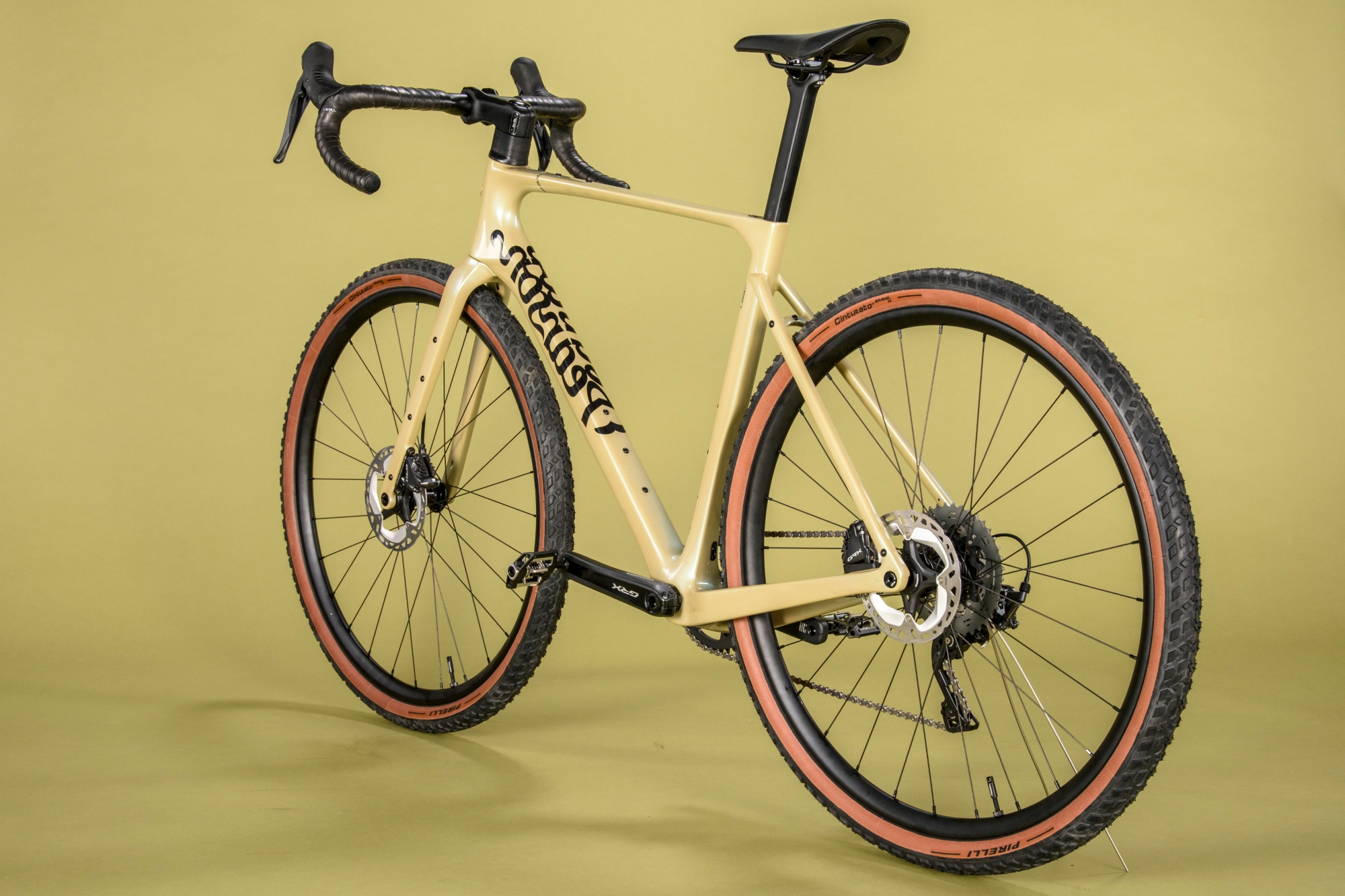
While this bike could handle any gravel race, it also has mounts on the fork, top tube and seat stays as well upper and lower bottle-cage mounts to create more space inside the main triangle for baggage. You can pack this frame out with some of the best bikepacking bags and head off for the weekend as easily as you could ride out for a quick hour’s blast. I’m happy to confirm it does both jobs well.
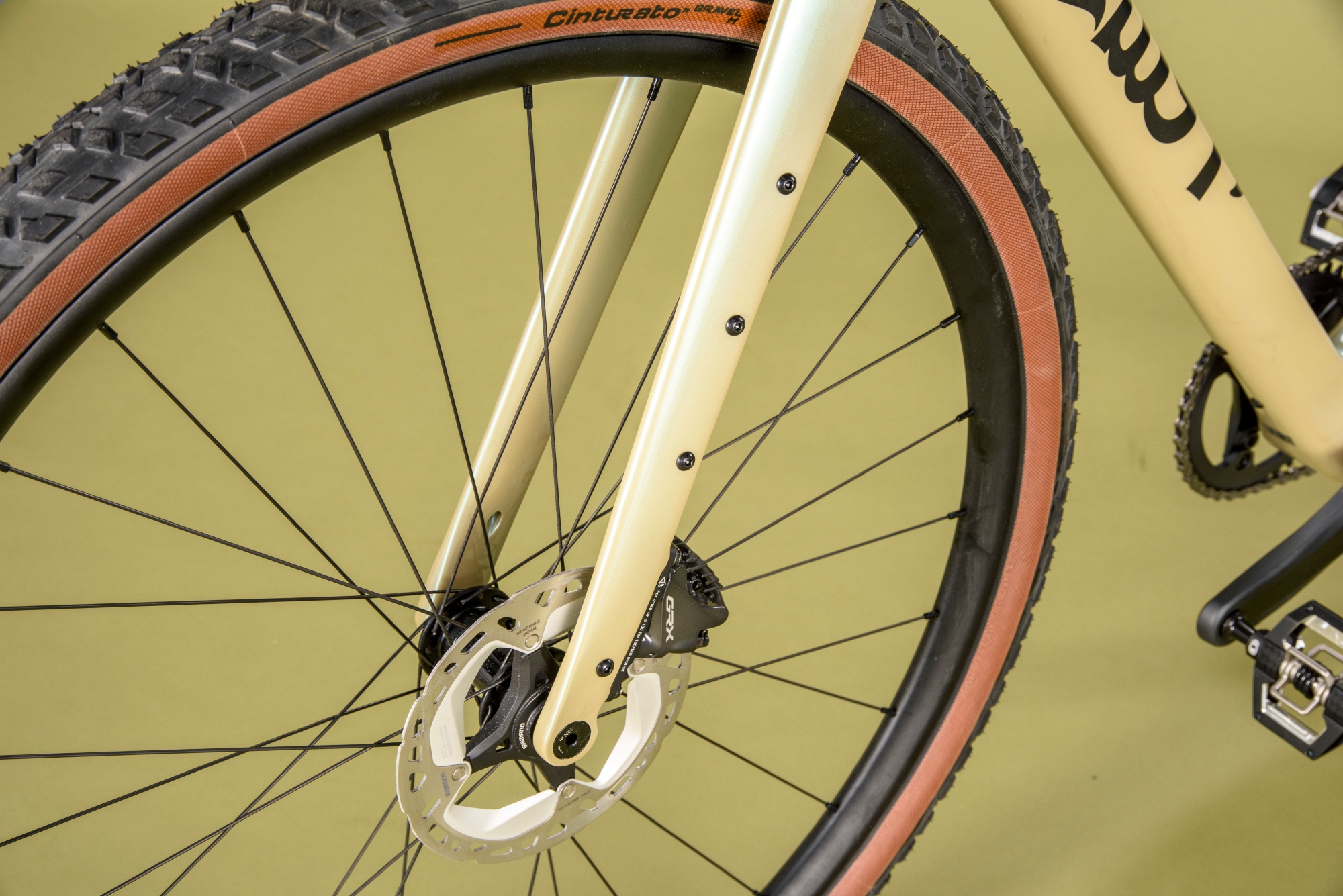
It’s a nice, light responsive (Toray T800) carbon frame that doesn’t suffer when weighed down. I rode it with an Altura saddle pack strapped to the seatpost, their 1.1 top tube bag and Vortex bar bag along with two Apidura fork bags sat in mounts. All that extra weight changes the bike’s balance point, but that doesn’t take long to get used to, and carbon’s natural rigidity means there is no off-putting wobbliness that I’ve experienced when loading up more spindly steel road frames. The point is, loading up a carbon bike that looks like it’s built for the race scene doesn’t feel like you’re using it incorrectly.
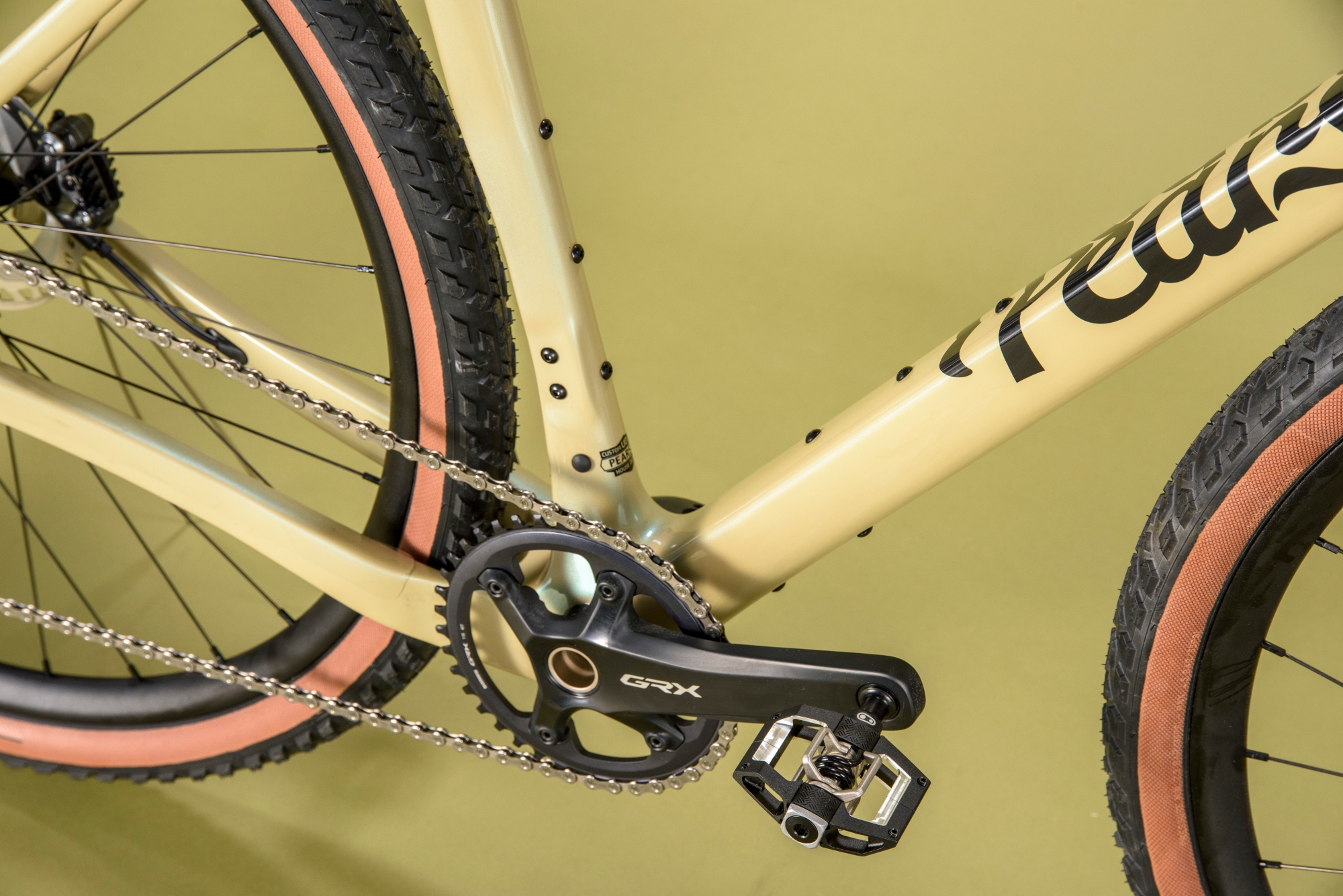
If buying online you’ll be given choices as you go through the process. First you choose your frame and its colour (two choices), then size (five choices), followed by groupset (all three versions of GRX), and wheels (three choices).
Our build was the stone-colour frame in medium with Shimano GRX800 and the DCR 25mm U-shape hooked alloy rims (28-spoke three-cross build with Bi-tech hubs and Sapim CX race spokes).
For the top spec with GRX815 electronic and 40mm carbon rims, you’re looking at an extra £2,300/$2000. Although it’s nice to have that kit on any bike, I’m happy with a lower spec when ploughing through the two-inch-thick mud on my local bridleways at 12mph. The standard build for the On and On is a one-by 40-tooth chainring with 11-40t cassette at the back giving you a gear for pretty much every eventuality.
With gravel bikes, the best gravel tyres really can transform the ride. Our test bike came with Pirelli’s French-made tubeless Cinturato Gravel M 45mm rubber with an aggressive open tread.
This is a big set of tyres, about as big and aggressive as you’ll find on a gravel bike. The tread made them sluggish on the tarmac, no matter what PSI I forced in (recommended max PSI of 65), but in the mud they cornered like they were on rails. The trails in my area are as muddy as they’ve been in years, but I felt as confident as I did when on my old full-suspension cross-country mountain bike (that’s going back a few years).
Pirelli, as you might expect, does rubber well and the Cinturatos were apparently the tyre of choice at the recent Traka 360km gravel event in Girona, Spain. I’m willing to bet that was drier and dustier than your typical British bridleway, so it would appear they perform in all conditions.
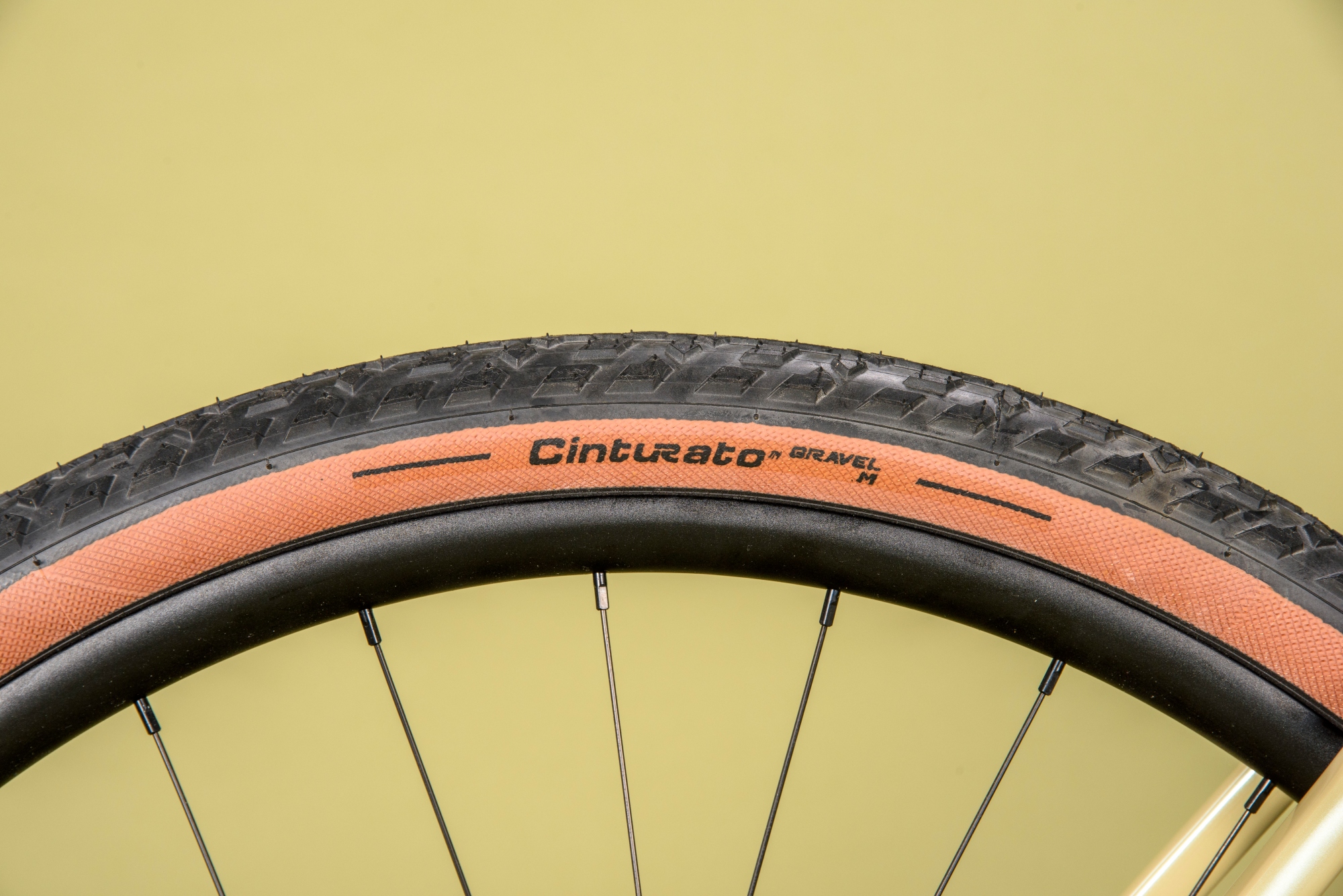
Pearson On and On - the ride
I couldn’t fault the On and On. This medium-sized frame allowed me to find a good position, both upright for slow speed manoeuvrability and down on the hoods when looking to carry speed. The reach in the bars coupled with the big body of Shimano’s GRX levers offered a stretched-out position on the hoods à la my road bike.
Of course you can’t feel the smoothness of the Toray carbon when riding off-road – or on-road with those big knobbly tyres – but you can feel the responsiveness when climbing.
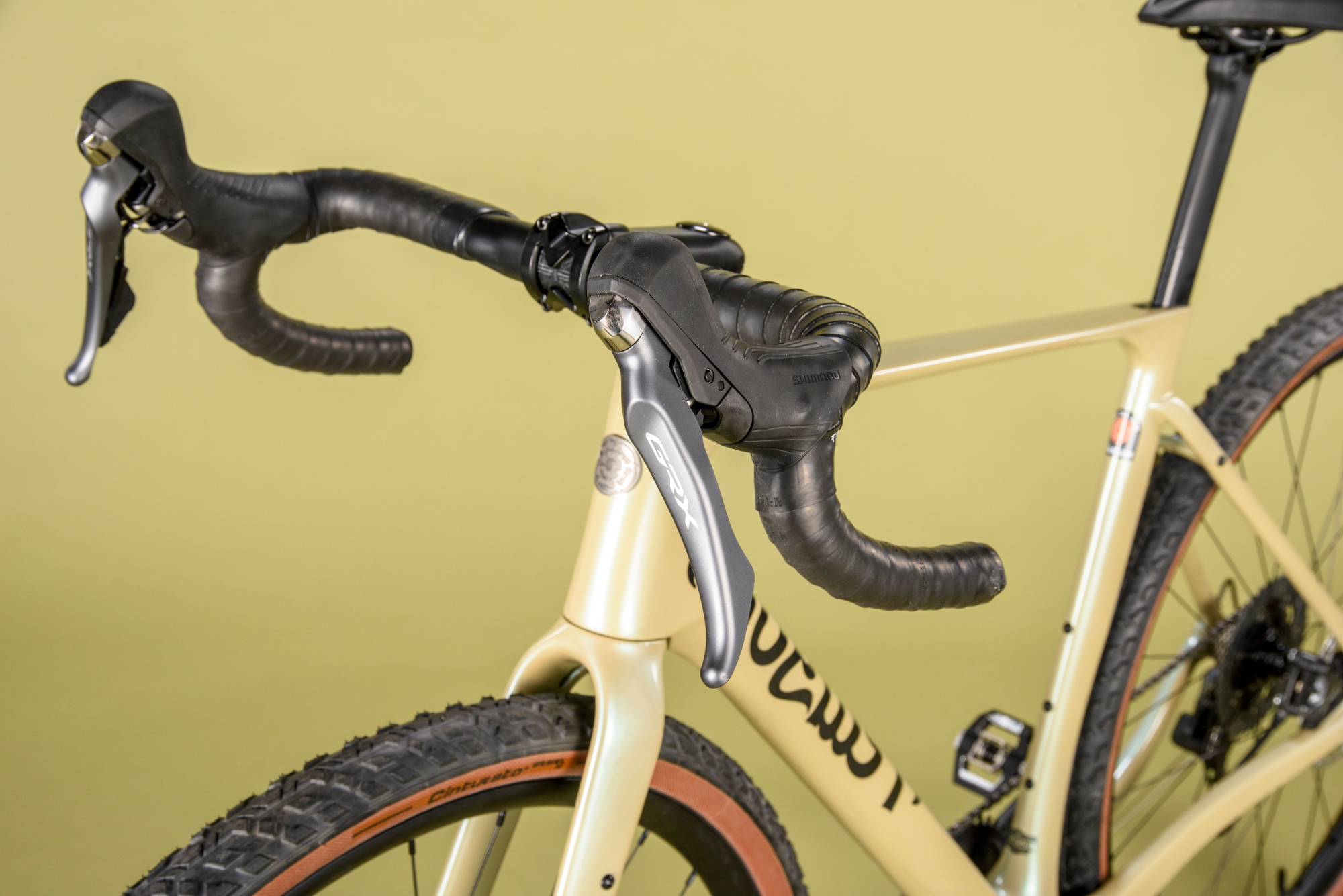
Most gravel bikes seem to be settling on a one-by build, and GRX mechanical continues to impress. It changes quickly up the sprockets with a nice light touch, even when under the pressure of grinding up a steep slope.
The 160mm rotors paired with the Pirelli tyres gave all the control I needed while the flared bars further enhanced the feeling of control. Like many of the best handlebars for gravel bikes, they are nice and narrow at the hoods while the flare to the drops gives a slightly wider and more stable feeling position for descending, as well as keeping clear of any luggage.
Value
Our Pearson On and On fitted with DCR alloy wheels and a mechanical 11-speed Shimano GRX 1x groupset retails at £3,850/$4100.
A comparable bike with a similar credentials is the Vitus Venon Evo-GR. It too can be bought with various specifications but for £3,499/$4099 you get SRAM's wireless Rival AXS groupset - stick with mechanical shifting and you can lower the price to £2999/$3699.
Specialized's lightweight gravel bike, the Crux, compares less favourably from a purely financial perspective, with the 11-speed SRAM Rival Comp version costing £4600/$4200. Like the On and On it too matches a carbon frameset with a mechanical groupset and alloy wheels - the case of the Crux these are DT Swiss G540s.
Specs
- Frame: Toray T800 custom UD carbon
- Forks: Toray T800 custom UD carbon
- Groupset: Shimano GRX800 11-speed X1, 40t chainset, 11-40t cassette, 160mm rotors
- Wheels: DCR 25mm alloy (hooked)
- Tyres: Pirelli Cinturato Gravel M 45
- Handlebars: Carbon 39mm, 15° flare
- Stem: Carbon 10mm Seatpost Carbon
- Saddle: Fizik Vento
- Weight:8.98kg
- Contact: pearson1860.com

Thank you for reading 20 articles this month* Join now for unlimited access
Enjoy your first month for just £1 / $1 / €1
*Read 5 free articles per month without a subscription

Join now for unlimited access
Try first month for just £1 / $1 / €1
Get The Leadout Newsletter
The latest race content, interviews, features, reviews and expert buying guides, direct to your inbox!

Editor of Cycling Weekly magazine, Simon has been working at the title since 2001. He fell in love with cycling 1989 when watching the Tour de France on Channel 4, started racing in 1995 and in 2000 he spent one season racing in Belgium. During his time at CW (and Cycle Sport magazine) he has written product reviews, fitness features, pro interviews, race coverage and news. He has covered the Tour de France more times than he can remember along with two Olympic Games and many other international and UK domestic races. He became the 130-year-old magazine's 13th editor in 2015.
-
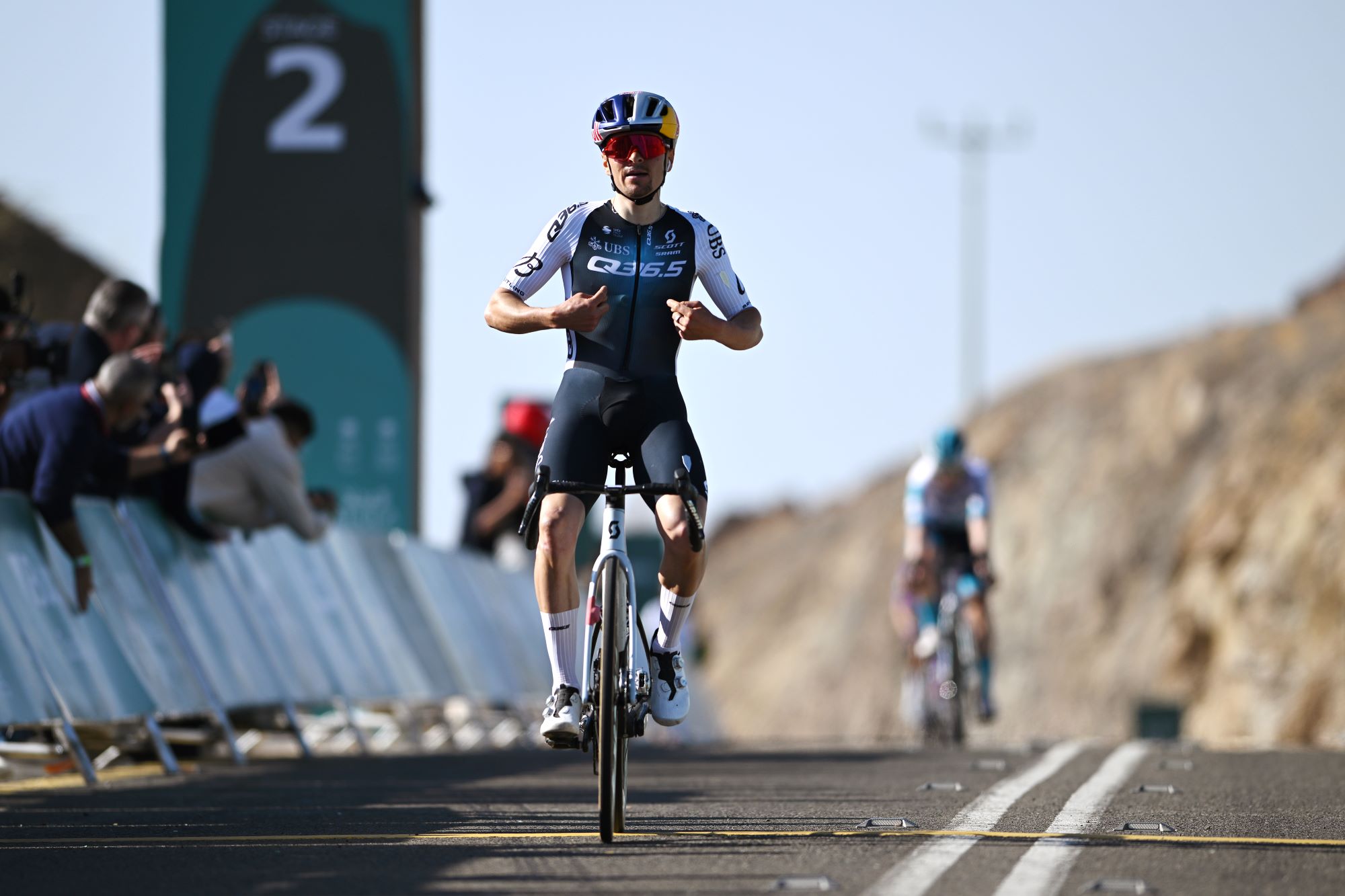 What does Q36.5 mean? We asked the people behind the Italian kit brand that sponsors Tom Pidcock's team
What does Q36.5 mean? We asked the people behind the Italian kit brand that sponsors Tom Pidcock's teamQ36.5's Luigi Bergamo and Lodovico Pignatti Morano take on Cycling Weekly's Q&A
By Tom Thewlis Published
-
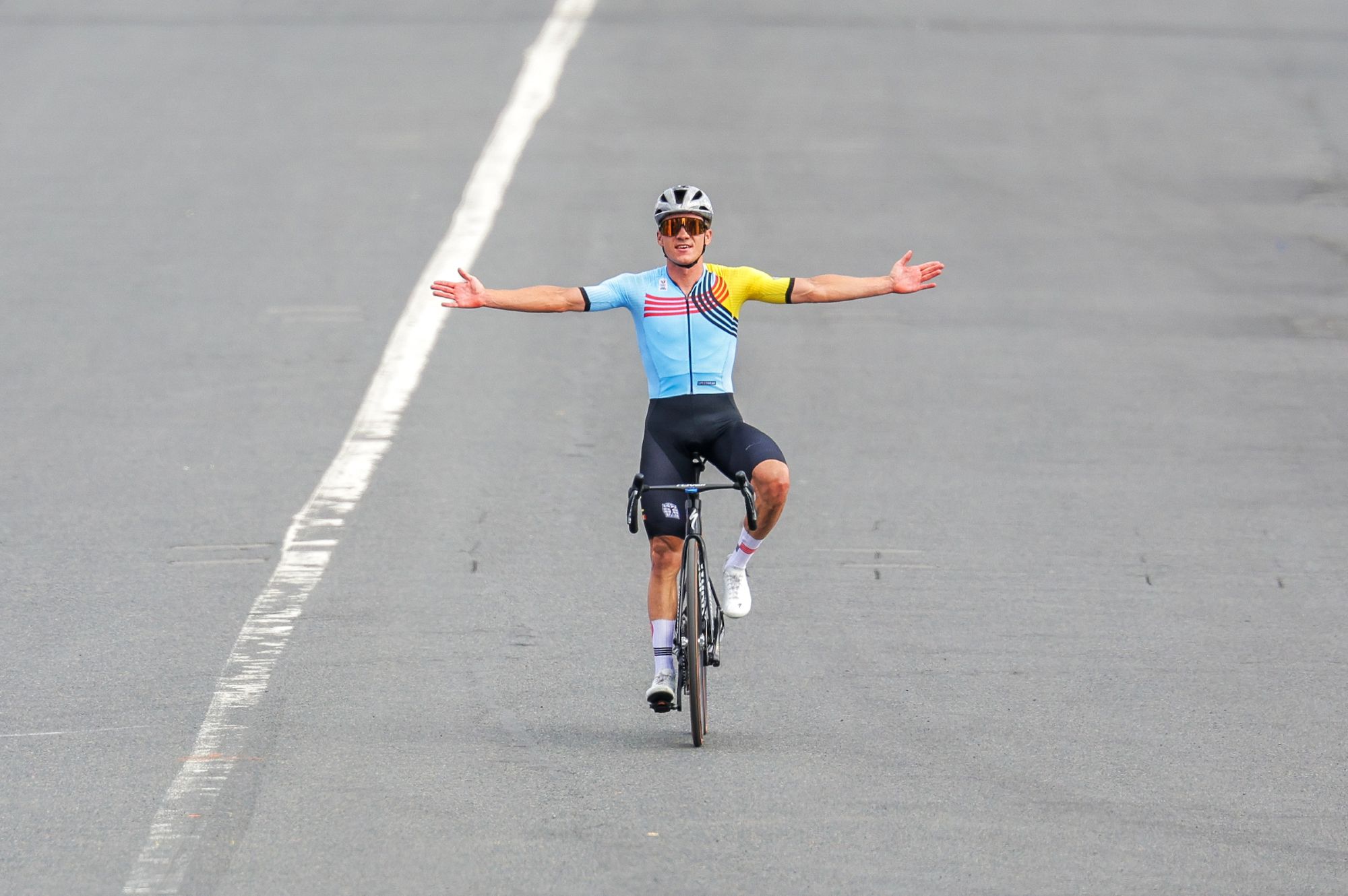 'If I were a tennis player then my career would be over': Remco Evenepoel contemplated early retirement after serious training accident
'If I were a tennis player then my career would be over': Remco Evenepoel contemplated early retirement after serious training accidentDouble Olympic champion was left with nerve damage and says his shoulder is not yet fully healed ahead of his return to racing at Brabantse Pijl
By Tom Thewlis Published
-
 'It can really push me along' - How a velodrome comeback is making Caleb Ewan faster on the road
'It can really push me along' - How a velodrome comeback is making Caleb Ewan faster on the roadAustralian says he'll "definitely" continue track work after rekindling passion
By Tom Davidson Published